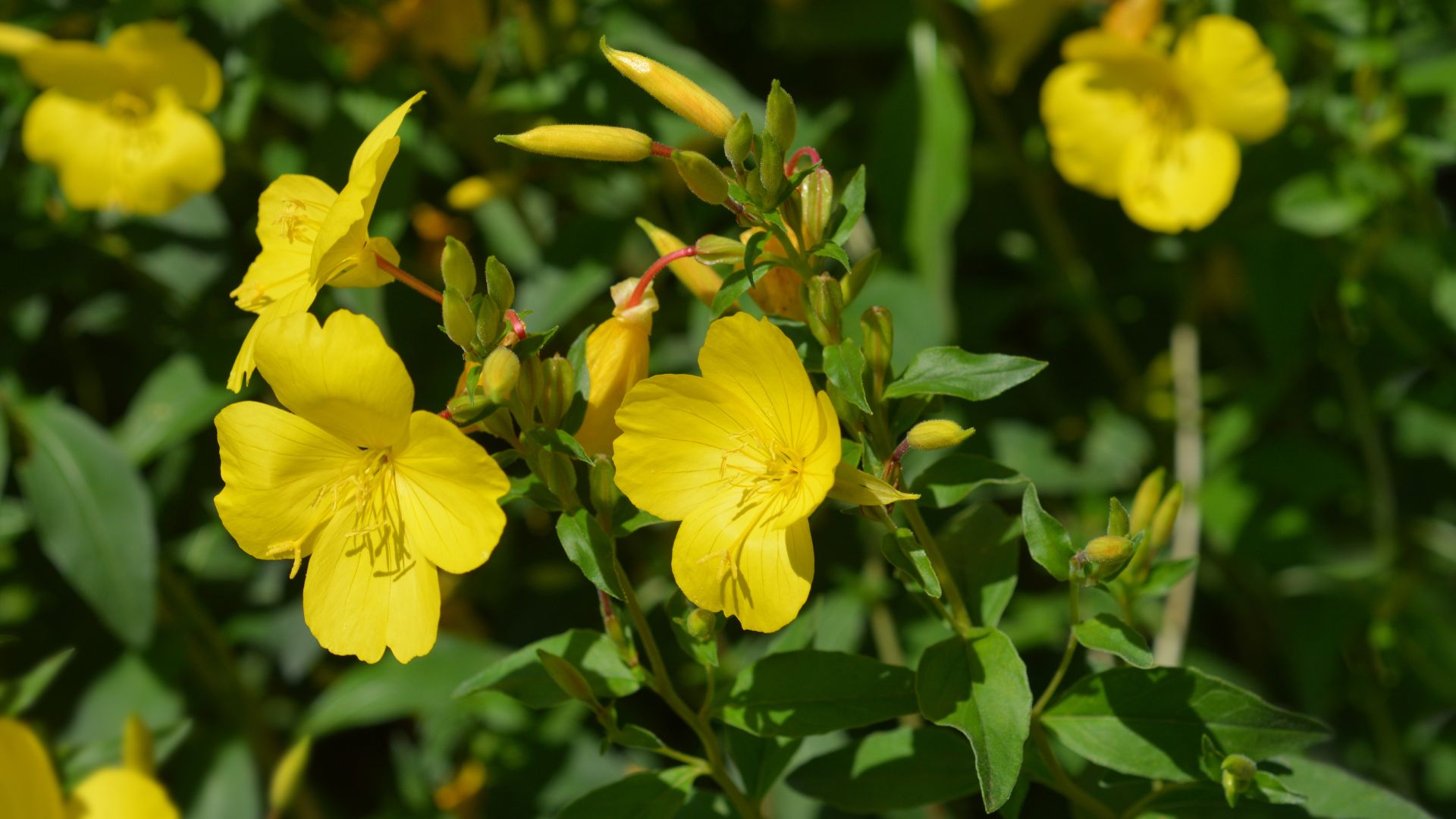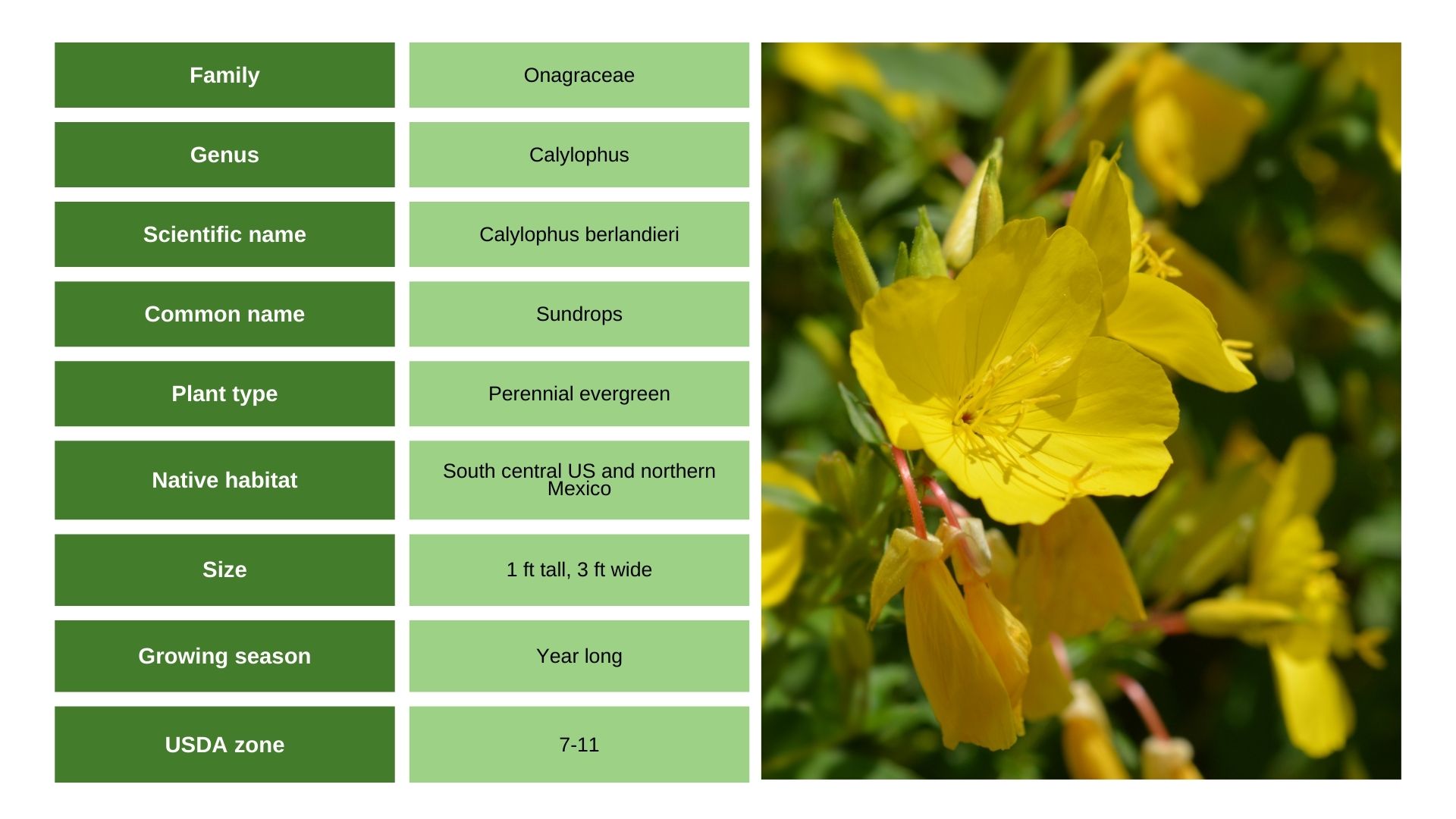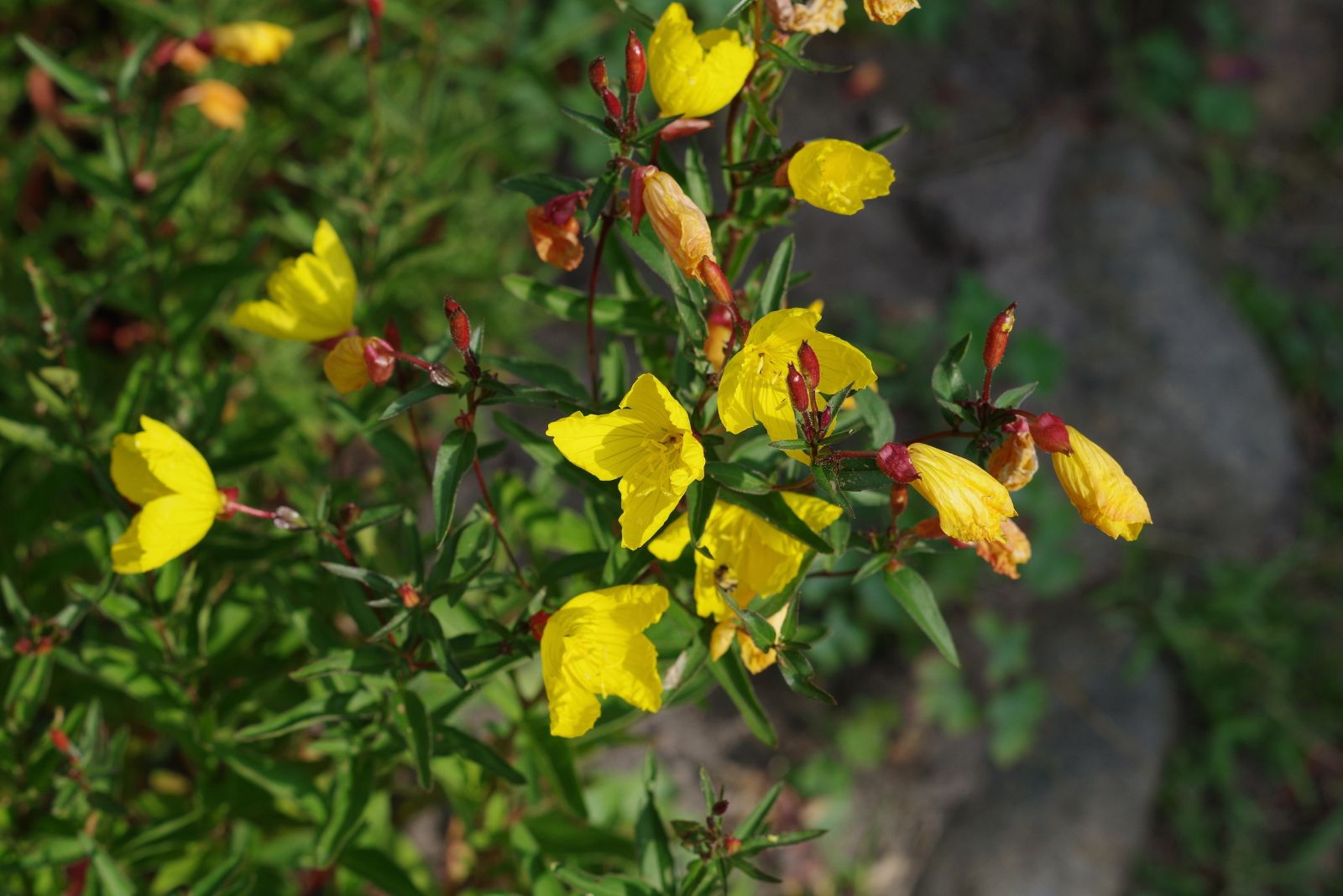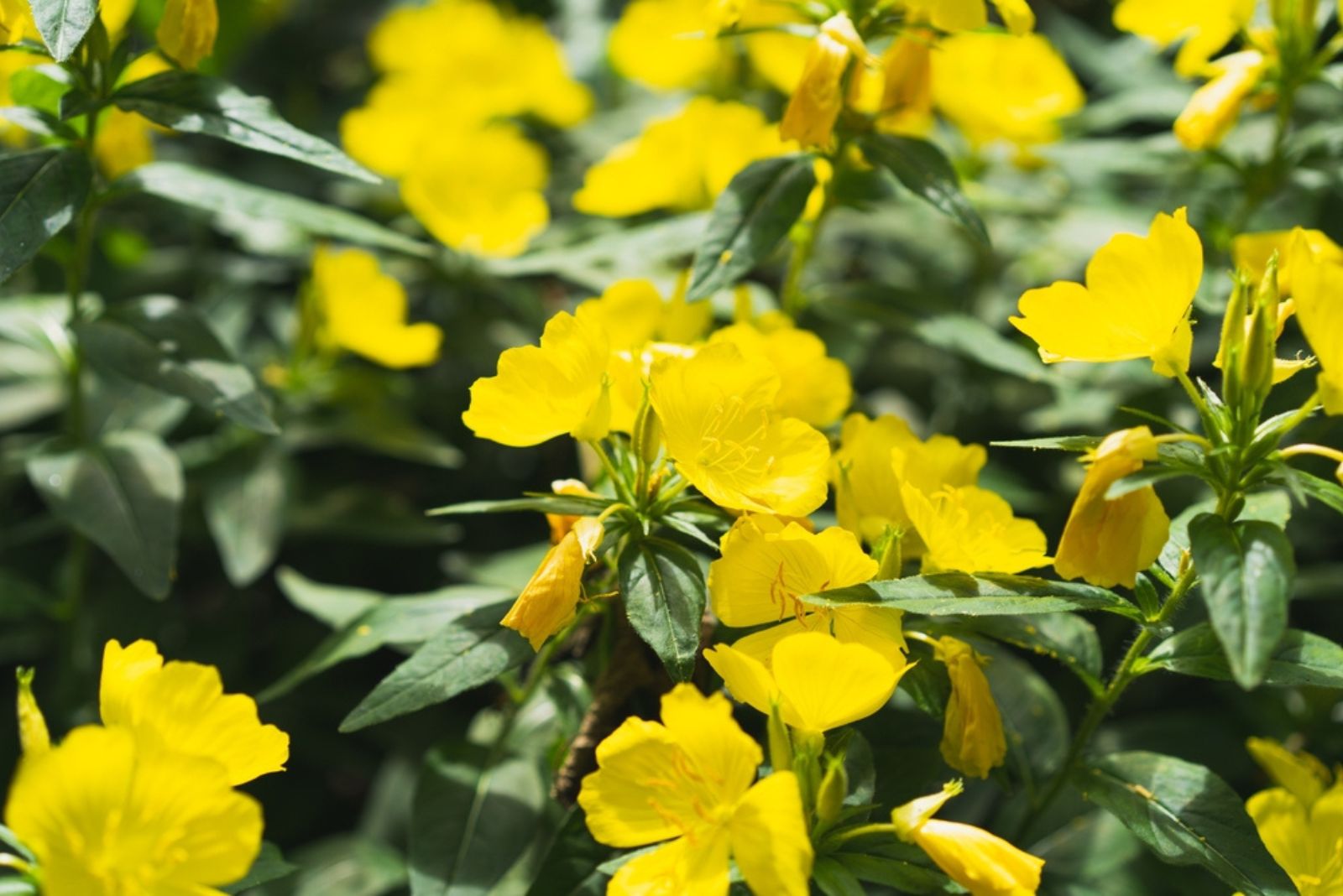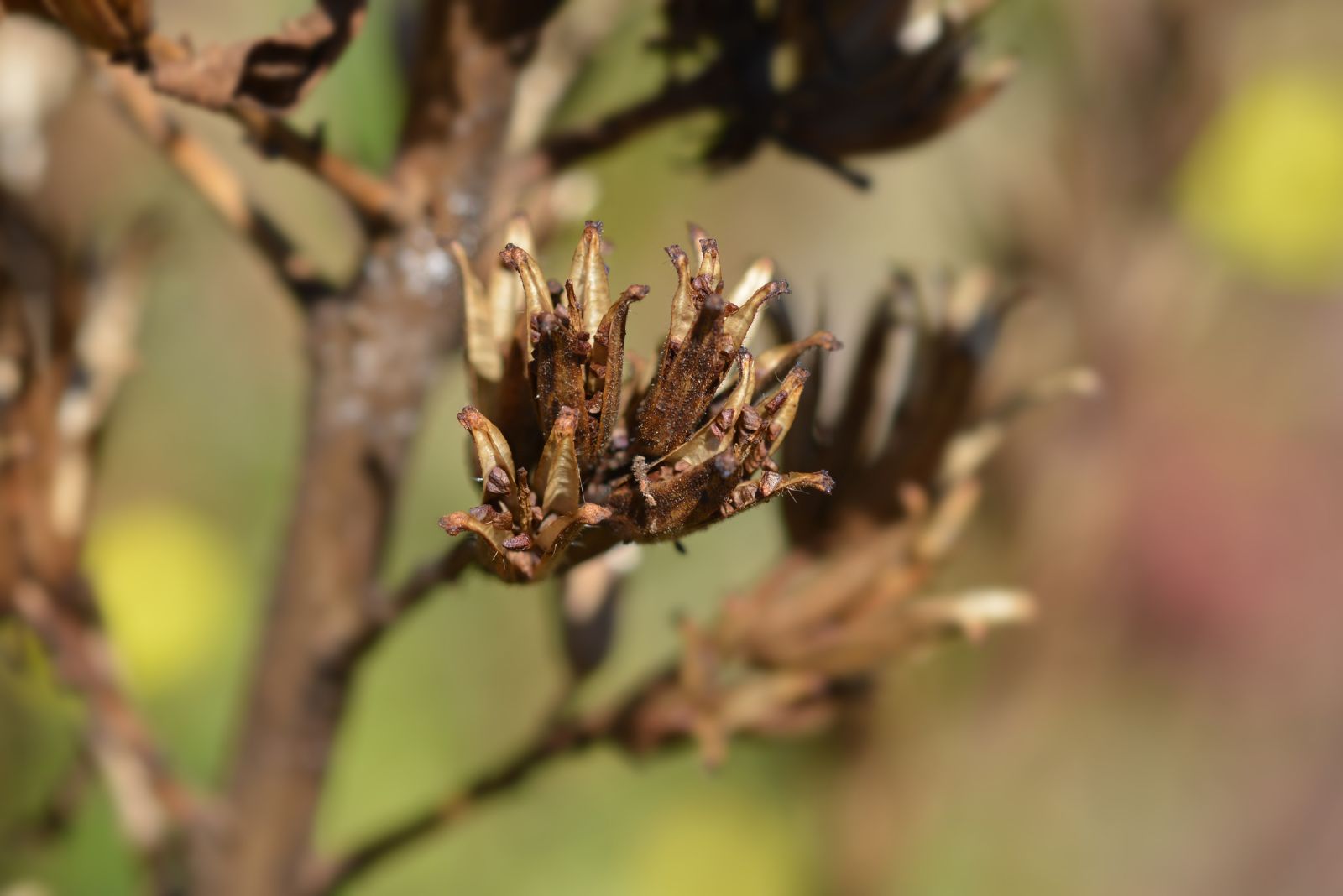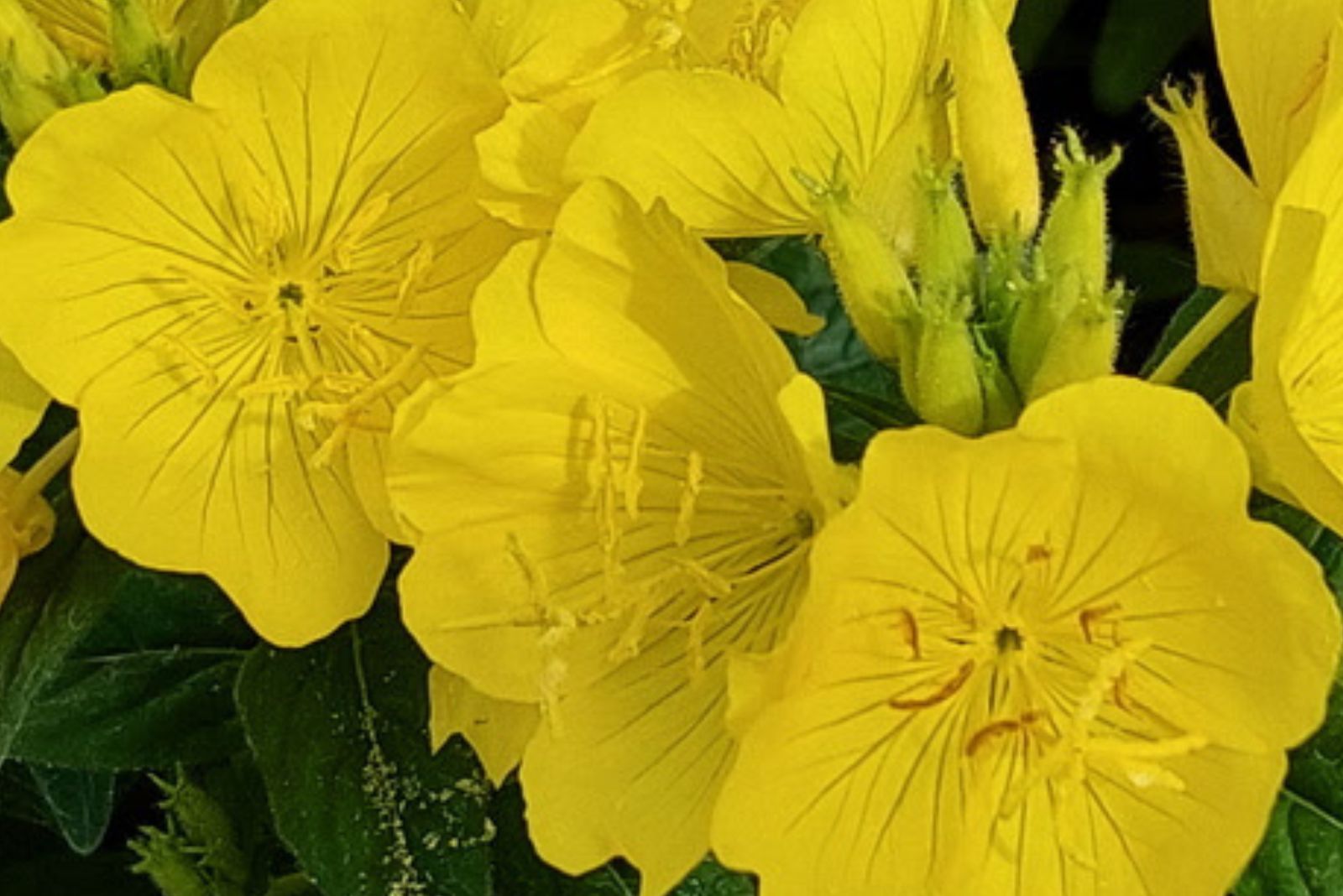These evergreen shrubs might be the very thing your garden needs. They produce hundreds of yellow flowers throughout the end of spring and into summer.
There are many great things about these flowers. You can plant them in your perennial beds or containers.
They don’t need too much care and are perfect for warmer climates. If you live in a cooler zone, grow them in planters and move them indoors once the weather cools down.
Here’s how to plant and care for sundrops the right way!
Let’s get started!
Location, Location, Location
The best spot for your sundrops is one that gets full sun and has excellent drainage. If you have a heavy soil, consider planting these beauties in a rock garden or pots.
Use sundrops to elevate your landscape. Plant them along pathways and borders. Allow them to trail over hardscape elements and decks to soften the sharp edges.
Timing And Planting How To’s
The best planting time for sundrops is in early spring or fall. Temperatures are cooler then and will reduce the inevitable transplant shock.
Dig holes in a spot that gets plenty of sunlight. Plant your sundrops to the same depth as they were in the container. Backfill them with more soil and give them a nice soak.
After planting, add some gravel or other type of mulch. It will keep the aesthetics of your garden and allow the soil to retain some water. This can reduce the sundrops’ needs for water even more.
And if you prefer to sow the seeds, do it in a designated garden bed. Label it so that you know it’s not weeds.
Sundrops Care Guide
Sundrops are quite drought-tolerant and don’t need that much to thrive. Here are their basic needs!
Light Requirements
As I already mentioned, sundrops prefer full sun conditions. Yet, they can tolerate some shade, especially on scorching afternoons.
Still, your best bet is to provide them with as much light as possible for the best flowering.
Water & Humidity
Newly planted sundrops need frequent irrigation during their first year of growth. Once they establish, you can reduce the amount of water you give them.
In fact, most established sundrops don’t need supplemental watering at all. This is especially true for the rainier regions.
Excess water can cause their roots to rot, so be careful. If in doubt, go without. Irrigate your established sundrops only during a prolonged drought.
You should also be mindful of humidity. These plants thrive in drier climates. So, if you live in a humid region, you should irrigate your plants less frequently.
A couple of things that can help in higher humidity are spacing and pruning. Give your plants proper air circulation and they will thrive.
Temperature
Sundrops flourish in heat, but they can tolerate cold temperatures, too. Their roots can withstand temperatures between 0-10°F.
Younger plants are more sensitive to cold weather. Their tips may die, but they will soon recover come warmer temperatures.
Soil & Fertilizer
The good news is that sundrops don’t demand a lot from their growing medium. Plant them in a low-fertility substrate with neutral or mildly alkaline pH.
Make sure the soil is well-draining, and that’s it!
Another sundrop requirement that can make your life a lot easier is the need for fertilizing. Since these plants are native to regions with poor soils, you usually don’t need to feed them.
Yet, if you’re growing them in containers and haven’t repotted them in a while, consider replenishing the medium. Add a well-balanced fertilizer in spring. Use a slow-release variety and you won’t feed it again until the next season.
Pruning
Cut your sundrops back in early spring all the way to the woody base. This will promote new and healthy growth. Pruning these plants also allows you to control them. You can shape them into a mound and keep them tidy.
You should also deadhead your sundrops after flowering. Not only will this keep your garden neat, but it will also encourage another flush of blossoms.
Repotting
Sundrops have a trailing habit, which makes them perfect for planters. They are the perfect spillers in the thriller, filler, spiller planting method.
Place them in a container that can accommodate their entire root system. Don’t choose a large pot. It will retain a lot of moisture and put your sundrops at risk of root rot.
The good news is that these plants don’t require frequent repotting, either. The only time you should consider moving them to a larger pot is when you notice that their growth has slowed down all of a sudden.
P.S. As the weather turns cold, move your potted sundrops indoors. Containers don’t provide enough insulation for the roots of these plants.
Propagating Sundrops
You can propagate these plants from seed or cuttings. Their seeds are tiny and hard to collect, but you can do it with a little bit of patience.
Shake the seed pod over a piece of paper to collect the seeds. Plant them in fall for the best results. Label the area so that you know where your sundrops will grow. It helps to avoid mistaking them for weeds.
If you want to propagate your sundrops from cuttings, here’s how to do it. Take new growth cuttings in early spring. Remove the bottommost foliage and place the cuttings in a moist seed-starting mix.
Keep them in indirect sunlight and a warm place. Mist the soil whenever it starts to dry (1-2 times per day). It shouldn’t dry out completely or your propagation attempt will fail.
Pests & Diseases
Sundrop pests and diseases are a rarity. The only real problem these plants experience is excess moisture.
In fact, it can stress them so much that pests start to infest them. They can also get root rot from too much water around their roots.
So, if you want to keep your sundrops problem-free, give them enough drainage. A well-drained soil and infrequent watering are the best way to start.
Avoid planting them in heavy clay substrates, and you’ll avoid overwatering.
Popular Sundrop Varieties
‘Butter Cream’ – Pale butter-yellow flowers of this cultivar appear in spring and summer. They are ideal for attracting hummingbirds and butterflies.
‘Gold Foil’ – If you want a traditional lemon-colored sundrop, this is the variety for you. It forms foot tall mounds and spreads 3 feet wide. It starts blooming in late spring and continues all throughout summer.
‘Ladybird Sunglow’ – This is another sundrop classic. Bright yellow flowers attract various pollinators and deter deer. Shape it into a mound or allow it to trail.
‘Tucson Sun’ – Large buttercup flowers and extreme heat resistance make this cultivar a perfect choice for the South. It will adorn your garden with creamy yellow blossoms that fade to pale orange and pink before they wane.
Companion Planting
Agave – Dramatic spiky foliage of agave goes amazingly with the calming nature of sundrops. Combine the steel-blue leaves with the yellow flowers and create an intriguing landscape.
Lavender – Purple and yellow flowers will attract hundreds of pollinators to your garden. Create colorful hedges or unique borders with this combo.
Verbena – Colorful verbena and yellow sundrops go hand in hand. They will attract pollinators and bring life to your garden. Plant them in large containers or add them to your perennial beds.
P.S. You can use other drought-resistant plants as sundrop companions. Sedums and pine muhly grass, for instance, are amazing options.
Are Sundrops Perennial?
Yes, sundrops are perennials, but they do not have a long life span. They usually last between 3-4 years, 5 if you’re lucky.
Propagate the plants or let them self-seed so that you don’t have to plant them again.
Are Sundrops Deer-Resistant?
Deer aren’t fans of sundrop plants and will leave them alone in search of a better food source. Yet, if they have nothing else to eat, they will gladly munch on this perennial.

